
V. Shanta, MD
In this installment of the Living a Full Life series, guest editor Jame Abraham, MD, interviewed V. Shanta, MD, an internationally renowned oncologist and Chairperson of the Cancer Institute in Adyar, Chennai, India. Dr. Shanta has been with the Institute since 1955, holding several positions including Director, from 1980 to 1997. She has also served on several national and international committees on health and medicine including the World Health Organization’s Advisory Committee on Health.
A Distinguished Family
V. SHANTA, MD
On the early days of India’s Cancer Institute: “We had a hard time, no doubt, but the excitement of creating something new and working scientifically in a collaborative spirit of inquiry kept us going.”
On advice for young oncologists: “The younger generation must ensure that the wonderful technologic advances they have are used not because they are available, but because they add value and are cost-effective.”
On her guiding principle of cancer care: “Treat patients as individual human beings, not as a disease state. And do so with compassion.”
V. SHANTA, MD, was born on March 11, 1927, in Chennai (formally Madras), the capital of the Indian state of Madras Presidency then, Tamil Nadu later, located on the Coromandel Coast off the Bay of Bengal. She was reared in a distinguished family that included two Nobel Laureates, both of whom were groundbreaking physicists. In her teens, Dr. Shanta attended the National Girls High School, where she decided to pursue a career in medicine.
In India in the 1940s, female professionals were rare, especially in the medical profession. However, Dr. Shanta was not going to cede her ambition to the sociopolitical norms of the time.
“I came from a fairly academic background, and although women were educated, they rarely took to a career. After attaining a liberal arts degree in college, they usually married and settled down as housewives. Some engaged in social activities but, for the most part, had minimal personal freedom. I felt that their life was drab. A few became teachers or went into nursing. It was not a life that appealed to me. I wanted to be independent and do something different, not get lost in the crowd,” Dr. Shanta told Dr. Abraham.
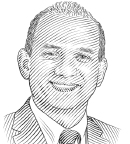
Jame Abraham, MD
After completing her pre-university course at Presidency College in Madras, India, Dr. Shanta pursued her ambition to become a doctor. She graduated MBBS in 1949, DGO in 1952, and MD in obstetrics and gynecology in 1955.
Dr. Abraham asked what experiences initiated her interest in oncology, a field barely recognized in the 1950s.
Dr. Shanta replied, “I was in my final year at Madras Medical College when we heard that a new cancer specialist was taking charge of the cancer ward, and we were inquisitive."
GUEST EDITOR
Dr. Abraham is the Director of the Breast Oncology Program at Taussig Cancer Institute, and Professor of Medicine, Lerner College of Medicine, Cleveland Clinic."We had seen a patient with gastric carcinoma who underwent surgery but was later put on palliative care since he had developed liver metastasis. One of us asked the specialist if there was another option for such a patient. I’ll never forget his sharp reply: ‘Pass the case on to better surgeons.’ We were dumbfounded and wanted to know how we could improve clinical outcomes in these difficult cases.”
She continued, “After further investigation, we were told that based on the size and situation of the metastasis, it could also be resected. I should say all of us were more than impressed. In 1949, nobody thought of liver resection for metastatic disease. Of course, today we have many other options.”
“I came from a fairly academic background, and although women were educated, they rarely took to a career…. I wanted to be independent and do something different, not get lost in the crowd.”— V. Shanta, MD
Tweet this quote
A Fortunate Meeting
IN 1949, Dr. Shanta was in her final year of medical school, when she heard a speech outlining the problems of cancer in Madras delivered by Dr. S. Krishnamurthi at the Hon. Medical Officers Conference. During Dr. Krishnamurthi’s lecture, an eminent professor noted that India’s Minister for Health had said that cancer afflicted only the very old, and since it was incurable, “we shouldn’t waste our precious resources trying to salvage old people.”
After that, “Dr. Krishnamurthi concluded his thought-provoking speech on an emotional note,” said Dr. Shanta. “He stressed that we have enough money to encourage beggars in their obstinate laziness, enough to build water tanks for beasts of burden, but there is neither the generosity nor the humanity to build a home for cancer sufferers, where a small dose of morphine would quell their agonizing pain. He said it was time that we transfer a little of our ahimsa [an attitude of universal benevolence; the desire to cause no harm or malice to any living being] from our books to our lives. The pin-drop silence ended in a thunderous applause.”
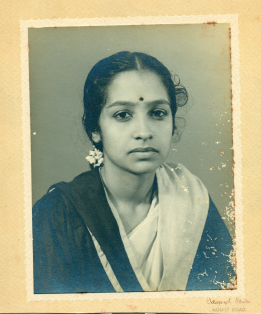
Dr. Shanta in 1949, when she received her medical degree.
A Turning Point
IN 1954, the Women’s Indian Association, under the leadership of Muthulakshmi Reddy, MD, the first woman medical graduate in India, founded the first cancer center (Cancer Institute [WIA]), in the southern peninsula of India, and the second in the country. The Institute was searching for a medical officer.
“I jumped at the opportunity and joined the Institute. It was truly a turning point in my career, and it was made possible by the indomitable courage of Dr. Reddy. She not only struggled to establish the Cancer Institute, but she was a tireless social worker who fought for the emancipation and empowerment of women. She was a legend in her lifetime,” said Dr. Shanta.
When Dr. Shanta joined the Cancer Institute, medical oncology did not exist. “Cancer treatment at that time was done by general surgeons and physicians. At the time of its founding, the Cancer Institute had only two doctors—Dr. Krishnamurthi, who was trained in surgery and tumor pathology, and me. I was a gynecologist and had trained in radiation oncology at the Princess Margaret Hospital in Canada,” said Dr. Shanta. “Between the two of us, we managed surgery, radiotherapy, and pathology. Medical oncology and chemotherapy were born years later, around 1970.”

Dr. Shanta with John Randolph “Jack” Hubbard, U.S. ambassador to India from 1988 to 1989, when Dr. Shanta participated in work with the pediatric unit of the National Cancer Institute.
Challenging, but Rewarding, Times
DR. ABRAHAM asked Dr. Shanta to describe the early days of the Institute. “We had a hard time, no doubt, but the excitement of creating something new and working scientifically in a collaborative spirit of inquiry kept us going,” she said.
She fondly recalled the nascent Cancer Institute. “It consisted of a single-story building that housed the outpatient department, an office, the radiotherapy and diagnostic rooms, a small dispensary, and a small store. There were 12 beds. One of the larger rooms was converted into an operating theatre. Our staff consisted of three honorary medical officers, Dr. Krishnamurthi and myself, two auxiliary nurses, and one technician,” said Dr. Shanta.
She continued, “I did rounds, dressed patients, gave the necessary medication, and wrote the case records. There were certain fundamental procedures that we were very scrupulous about, even in the earliest days when we had no staff and no money. One of them was a detailed and comprehensive case note; another was pathologic confirmation of all tumors and the cytologic study of smears. I would, therefore, complete the daily records in detail and fill up the investigation slips. It was a much more arduous task than it is today, as there were no computers at that time.”
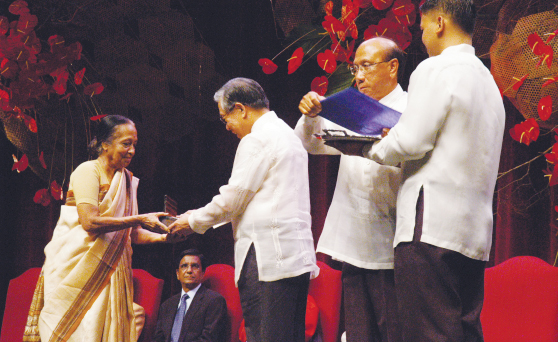
Dr. Shanta received the Ramon Magsaysay Award for Public Service in 2005. The Magsaysay award is recognized as Asia’s Nobel Prize and was presented by the Philippine government in honor of former Philippine President Ramon Magsaysay and his example of integrity and service to the people in a democratic society.
Given the lack of appropriately trained personnel, Dr. Shanta herself cleaned and sterilized the operating theater after a procedure. Moreover, since the Institute didn’t have an anesthesiologist on staff, they had to schedule surgeries whenever an anesthesiologist from another hospital had free time, usually in the early morning or late evening.
“We often started operating at 8:00 PM or 9:00 PM and finished past midnight. I would serve as the nurse and the surgical assistant. After grouping and cross-matching, I started the blood transfusion, assisted the anesthetist in getting the anesthesia going, scrubbed and laid the table, draped the patient, and assisted with the operation,” said Dr. Shanta. She added, “Radiation therapy was carried out in the mornings, and the histopathologic work was done in the afternoons.”
Asked to encapsulate the clinical challenges the new Institute faced, Dr. Shanta said, “We had minimal understanding of the unique biologic processes of cancer; its heterogeneity; and the intricacies of carcinogenesis, metastasis, and other processes. Our greatest challenge was advanced locoregional cancers, for which rational treatment was often impossible. That continues even today, although to a lesser extent.”
Patient Population Expands Beyond the Institute’s Scope
THE CANCER INSTITUTE was founded as a voluntary charitable institution. The basic ethos, which has never changed, entailed cancer care for the underprivileged, without any social or economic divide. “Approximately 30% of our patients are boarded, lodged, and treated free of cost. Treatment protocols are the same for both paying and nonpaying patients. Patients in the general ward are given state-of-the-art treatment based on their needs, including marrow transplant, organ conservation, precision diagnosis, and multidisciplinary therapy,” said Dr. Shanta.
Due to the quality of care and access to equitable care, the number of patients rapidly increased. “Within a few months, our patient population exceeded 50. Patients occupied every available space, and outpatient services were conducted in the corridors. We were desperate,” she said.
“Then one day, out of the blue, a total stranger from a neighboring state walked in and said that because of our service to the underprivileged, he wanted to contribute funds toward an additional ward of 50 beds. It just came in time when we were getting flooded with patients and were desperate for more room. We were blessed by a stranger’s compassion at our time of need,” said Dr. Shanta.
The Cancer Institute Today
“WE STARTED with only 12 beds. Today the Institute is a comprehensive cancer center comprising 650 beds dedicated solely to cancer cases. We have a research division, laboratory and clinical research facilities, and a college of oncologic sciences for professional and paraprofessional education,” noted Dr. Shanta.
“When I began my career, the vast majority of patients presented with advanced disease. We’ve made progress with better early-detection strategies, but there is a lot of work ahead.”— V. Shanta, MD
Tweet this quote
She is equally proud of their work in preventive services. “We have a preventive oncology division to create cancer awareness, public education, and early detection that includes a hospital registry and a demographic registry, both acclaimed as the best in the country,” she said.
Dr. Shanta said that surgery and radiation were the mainstays in early cancer management. Since both modalities are local treatments, their value was limited when the disease was locally advanced or had metastasized. “These modalities failed to cure locally advanced cancer because adequate surgical clearance was not possible or surgery was so mutilating that patient acceptance was poor, and even if resected, the local failure rate was unacceptably high.”
When did you see the medical oncology needle move? “From 1965 to 1975, we saw a remarkable surge in scientific understanding of the complexities of cancer biology, parallel with advances in sophisticated technology, both diagnostic and therapeutic. This knowledge changed concepts in oncologic care and management, which resulted in a revolution of overall advances across the cancer care scenario.”
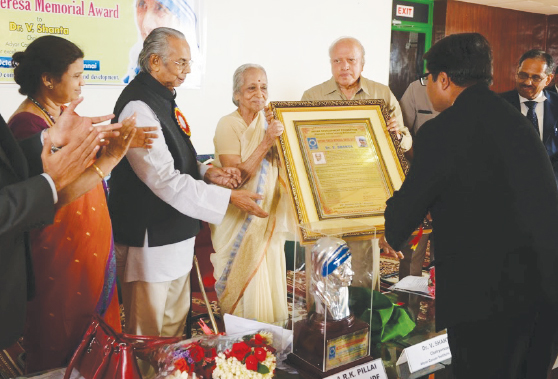
Dr. Shanta received the Mother Theresa award in 2013 and was recognized for her humility and benevolence.
Pressing Issues
DR. SHANTA has dedicated much of her later career to the prevention of preventable cancers, with tobacco control and cessation being a major thrust of her advocacy efforts. “Our center for preventive oncology has been working in collaboration with nongovernmental organizations to carry out cancer screening camps and Pap smear tests at the district level in various parts of the country,” she said.
She emphasized that in order to deliver high-quality affordable care to all in need, the spiraling costs of cancer care must be dealt with. “When I began my career, the vast majority of patients presented with advanced disease. We’ve made progress with better early-detection strategies, but there is a lot of work ahead,” she noted.
When asked what advice she has for the younger generation of oncologists, Dr. Shanta replied, “The younger generation must ensure that the wonderful technologic advances they have are used not because they are available, but because they add value and are cost-effective. Most important, one should act in the interest of the patient with cancer without modality bias.”
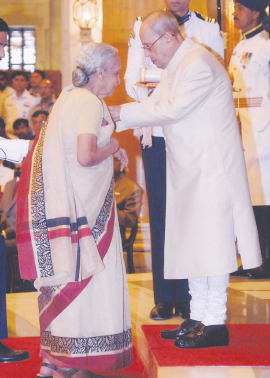
In 2016, Dr. Shanta was presented with the Padma Vibhushan award. The award is among the highest civilian awards of the Republic of India given for “ exceptional and distinguished service without distinction of race, occupation, position, or sex.”
The issue of balancing her personal life with her extraordinarily busy career was described succinctly: “Fortunately, the question of personal life did not and does not exist in my case. To me, work is service, work is prayer.”
Every Patient Is Unique
ASKED TO SHARE a special clinical experience that she remembers from her long and illustrious career, Dr. Shanta said, “Every patient with cancer has a unique story. One that stands out, however, is Padmaja, a bright 22-year-old research fellow in the zoology department at the Indian Institute of Technology Madras. In 1987, she presented with a diagnosis of non-Hodgkin lymphoma in the leukemic phase. At that time, we were working with the pediatric unit of the National Cancer Institute in Bethesda, Maryland, under a PL 480 grant.”
Dr. Shanta continued: “Padmaja was treated under our non-Hodgkin lymphoma protocol; she achieved complete remission and remained so. Five years later, in 1992, she asked me if she could go abroad for further studies. She was concerned about recurrence, a common worry among survivors. When I said yes, she was delighted. She was selected for a Commonwealth Fellowship, but the Medical Board rejected her on health grounds. I was furious about the perception of cancer.”
Subsequently, Dr. Shanta said, “I wrote to the head of the Department of Leukemia at the Royal Marsden Hospital, requesting his intervention. After a few consultations with the UK Commonwealth authorities, Padmaja’s fellowship was cleared. She went to the United Kingdom and completed her fellowship. She married a colleague and settled in the United States in 1997. Today, she is happily married with children and is busy with academic work.”
Still a Force in Oncology
“The past 6 decades have been almost a dream. Still, we could have done better.”— V. Shanta, MD
Tweet this quote
WHEN ASKED if she had a final thought on her amazing career, Dr. Shanta responded, “I do not consider my career to be ‘amazing.’ It has been a unique opportunity. The past 6 decades have been almost a dream. Still, we could have done better. Awards are recognition of the work you are doing, but when you carefully reminisce about the work done, you wonder whether you are worthy of that recognition.”
To this day, Dr. Shanta remains one of the most influential doctors in India. She has dedicated more than 60 years of her life to bettering the lives of patients with cancer. And throughout the years, her guiding medical principle has never wavered: “Treat patients as individual human beings, not as a disease state. And do so with compassion.” ■
DISCLOSURE: Dr. Shanta reported no conflicts of interest.

